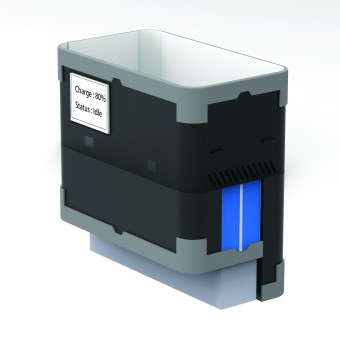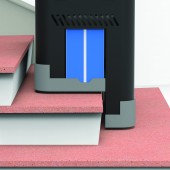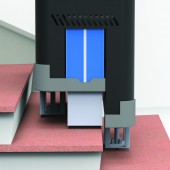DESIGN NAME:
sCrane
PRIMARY FUNCTION:
Staircase Logistic Robot
INSPIRATION:
In Singapore, most of the population stay in high rise public housing, which are subjected to regular maintenance work. However, when transporting the materials needed to higher floors, such as bricks or paint, the lift is often unavailable to be used by the construction staff as it is not fitted with appropriate safety features. Thus they are left to transport the materials manually via the staircase. sCrane eliminates the manual labour required to transport these heavy materials
UNIQUE PROPERTIES / PROJECT DESCRIPTION:
Even though elevators are widespread in public spaces, in many scenarios, such as in landed property or older public housings, staircases are the only option to access higher floors. If humans were employed to move large quantities of bulky and heavy items up the stairs, there would be a performance loss over time as it is an arduous task. sCrane is able to both ascend and descend the staircase autonomously while carrying loads of up to 100kg, taking over the menial task of transportation.
OPERATION / FLOW / INTERACTION:
sCrane has a side panel that can be opened to insert the load. Once the load has been secured, sCrane can navigate towards the staircase and begin the ascending sequence. The sCrane uses three sliders to maintain at least three points of contact with the staircase to preserve stability. With the omnidirectional mobile base, it is able to navigate through tight corners, such as the fold back type of staircase.
PROJECT DURATION AND LOCATION:
This project started in September 2020 and is supported by the National Robotics R&D Programme Office.
|
PRODUCTION / REALIZATION TECHNOLOGY:
sCrane consists of the main chassis which houses all the electronic components, and three independent sliding modules which form the basis of the lifting mechanism. The bulk of the load is borne by the center slider, which uses a scissor lift powered by a heavy duty linear actuator to provide the lifting force. The sliders at the front and rear act as additional points of contact during the lifting sequence, allowing the robot to be as stable as possible when performing the lifting maneuver.
SPECIFICATIONS / TECHNICAL PROPERTIES:
Dimension: 370cm (W) x 660cm (L) x 670cm (H)
Weight: 30kg
TAGS:
Logistic Robot, Autonomous, Load Lifting, Staircase, Ascending, Descending
RESEARCH ABSTRACT:
The staircase geometry poses a challenge in stable translation with load. We used self-reconfigurable principles to design sCrane, which conforms to stair shape. Optimized three-point contact is ensured throughout the locomotion with centre of gravity within the robot's footprint, making it stable. The gait is programmed to maintain the smooth transition and the sideways movement on the stairs as well. The sCrane with the capability of logistics on both floor and staircase makes it unique.
CHALLENGE:
The main challenge in designing the sCrane was the space limitation due to the width of the stairs, and the effective use of the space in order to supply enough force to lift both the robot and the load.
ADDED DATE:
2021-02-26 10:43:01
TEAM MEMBERS (3) :
Ian Phillip Lowe Heng Hang , Mohan Rajesh Elara and Abdullah Aamir Hayat
IMAGE CREDITS:
Image #1 - Creator Ian Phillip Lowe Heng Hang, sCrane Perspective View, 2021
Image #2 - Creator Ian Phillip Lowe Heng Hang, sCrane Loading, 2021
Image #3 - Creator Ian Phillip Lowe Heng Hang, sCrane Climbing Sequence 1, 2021
Image #4 - Creator Ian Phillip Lowe Heng Hang, sCrane Climbing Sequence 2, 2021
Image #5 - Creator Ian Phillip Lowe Heng Hang, sCrane Climbing Sequence 3, 2021
|









